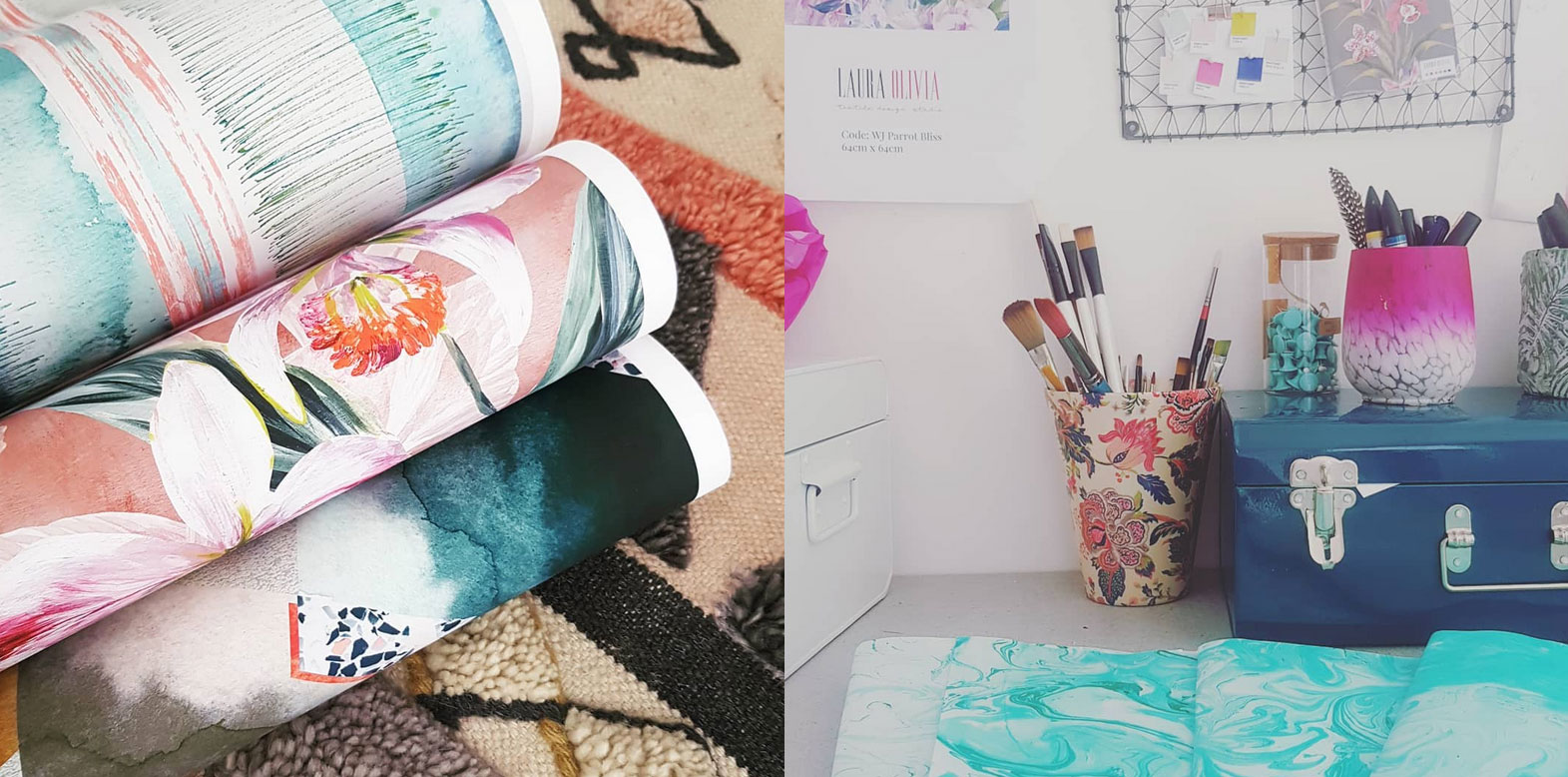Have you ever wondered what’s “normal” when working with print studios or agents? How do you know what to expect in terms of sales, how many designs you will need to be producing, and how to best communicate with your studio? Many designers feel like they are working in the dark, but luckily we have the amazing Laura Olivia, our resident home decor expert in the Textile Design Lab who runs her own successful textile design studio and is here to help! We recently held a highly informative webinar with Laura in the Lab to help designers make a more informed decision about starting a new relationship with print studios or agents and how to get the most out of their current relationship.
Laura’s Experience
Laura has a wonderful perspective to share as she has seen this industry from both sides–both as a designer freelancing for other studios, and now running her own studio and representing other designers. Laura’s full presentation is chock full of helpful insights including tips on developing your portfolio to present to an agent, making initial contact, what questions you should be asking your agent, issues that may arise, as well as two case studies of actual designers that are making their living as textile designers.
We are excited to share a few highlights from this presentation with you today!

Pros of working with print studios
- Studios already have a client base & have relationships with companies that are hard to reach otherwise. “A lot of these studios, they know the buyers personally, and they can just call them up and make an appointment.”
- You can concentrate on purely designing & leave the marketing to them. “I don’t know about you, but when I’m designing, if I have to stop because I need to email people or go to a meeting, or chase after someone that hasn’t answered an email, it stops my flow of working. I find you get a lot more done if you can just design all day.”
- A good studio will help you improve your design skills. “When I first started with a studio, they were brutally honest with me, literally to the point where, I spent like two days working on a design, and then they would say, “this isn’t right, that isn’t right.” And it was really hard in the beginning, but it was the best thing for me to get my work up to a standard that was really commercial. And I don’t believe that would have happened if they had been really nice about my work all the time, and not told me the honest truth. At the end of the day, both of your aims are for your work to sell, so there’s no time for people to give you lots of compliments.”
How to prepare for working with an agent
- Visit trade fairs. Identify trade fairs where agents/studios are selling designs directly to clients in your chosen market. Make a list of questions beforehand in case you are able to engage with appealing agents; these might be questions like, “How much commission do you take, how much work do you expect us to send in, how much feedback do you give us?” But always be aware that studios are first and foremost there to meet clients, and have paid a lot of money for their booth, so be mindful of when you are approaching them. “I wouldn’t go to these shows on the first day, because that’s when a lot of clients are buying designs. Maybe go in the morning of the last day or after lunch. I wouldn’t turn up with a huge portfolio, and expect them to look through it. I would perhaps take a tablet with a portfolio of your best work.”
- Research. “Don’t worry if you can’t attend trade fairs, because I know some of you live a long way. So what you can do is look through the trade fair websites to see a list of the exhibitors. Once you’ve got those names, you can carry on the research. Look at their websites, their social media accounts. Try and get an idea for who their clients are, the different styles that they cover. Obviously look at which exhibitions they attend yearly. And then I would have a look at your agent’s clients. Some of them may have a client list on their website, and if not, if you look at their Instagram, you can usually get a feel for who their clients are. Then you can look at those clients, go on their websites and see how you can develop your work accordingly.”
- Reach out to other designers. “Something that has worked really well for me is LinkedIn. So I will search for a particular studio, and then it will come up with either the designers that work for that studio, or ones who have worked with them in the past. Then I would send them a quick message, and you’d be surprised at how helpful other designers are. A lot of them have messaged me back, and they gave me a feel for what to expect. You can ask questions like how long they’ve worked for them, how they found them, how good the communication was. If it’s a large studio or a small one, things like that. And then obviously how much they sold. You can find out a lot about the dynamic of a company by asking another designer. “
Want to learn more about print studios? In our free training you’ll learn how studios operate, what they expect from designers and how to find the right studio for your artistic style!












